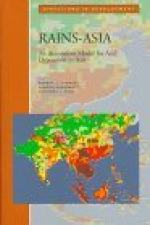|
This section contains 515 words (approx. 2 pages at 300 words per page) |

|
Acid rain can be defined as rain that has a pH less than 5.6, formed primarily through the chemical transformation of sulfur and nitrogen compounds emitted by anthropogenic sources. In addition, acidic compounds can be deposited as aerosols and particulates (dry deposition), and mists, fogs, snow, and clouds (wet deposition). Most scientists agree that the phrase acidic deposition is more appropriate when characterizing the overall problem, but acid rain is the most widely used term.
Robert Angus Smith (1817-1884), a Scottish chemist, first used the expression "acid rain" in 1872 when describing the acidic nature of rain deposited around Manchester, England. The problem was believed to be localized and confined to urban areas until reports appeared during the 1970s and 1980s describing widespread acidification of lakes in the northeastern United States, eastern Canada, and Europe. Additional reports surfaced regarding declines in growth and vigor of forested ecosystems throughout...
|
This section contains 515 words (approx. 2 pages at 300 words per page) |

|


